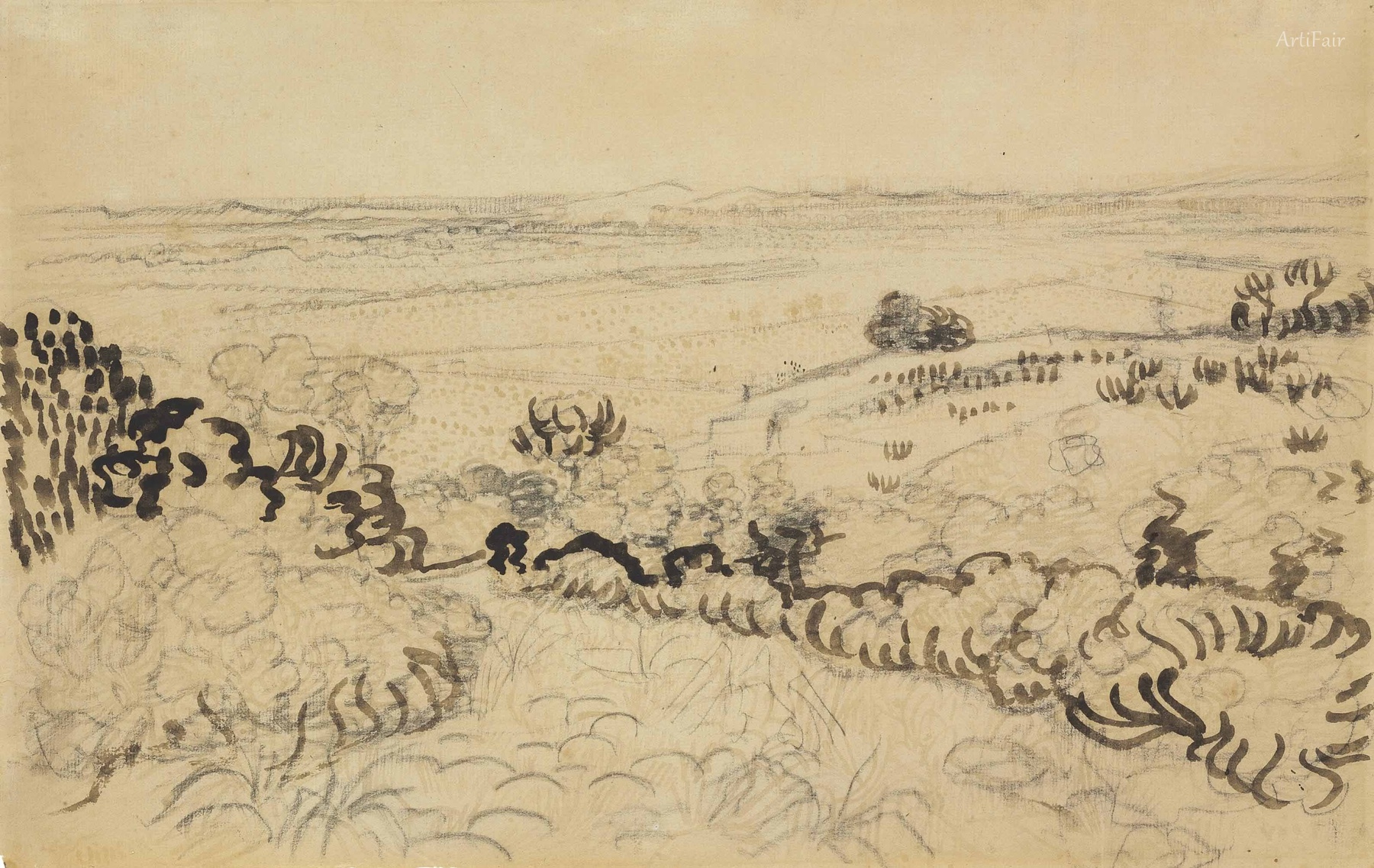
Art Appreciation
The artwork captures a breathtaking view of the Plain of La Crau, a landscape Vincent van Gogh became enamored with during his time in the south of France. The scene presents undulated hills that dance through rolling fields, painted with a captivating spontaneity that evokes a sense of movement and life. Van Gogh uses dynamic lines and expressive strokes to depict the foliage and contours of the land, almost inviting the viewer to wander into this scenic expanse. The horizon stretches out into the distant hills, blurring ever so slightly—where earth meets sky—offering a sense of depth that pulls you in, creating a compelling conversation between foreground and background.
The color palette is relatively subdued, characterized by soft earth tones and muted grays that suggest a serene yet steadfast landscape. The sketchy quality of the brushwork adds to the raw beauty of the work—it feels unfinished yet alive. This unfinished quality might mirror van Gogh's own turbulent emotions and inner struggles experienced during that period. There's an almost music-like rhythm created by the swirling foliage; at times, it feels like the wind could be heard rustling through the leaves, enhancing the emotional undercurrent of the piece. Historically, this artwork reflects van Gogh’s profound connection with nature, capturing its beauty and complexity at a time when he was searching for both peace and artistic identity in his life. The Plain of La Crau serves as not just a landscape but a vivid manifestation of van Gogh’s artistic significance in the wider Post-Impressionist movement. His ability to translate emotion into landscape paint continues to resonate, inviting viewers to find tranquility amidst the chaos of the world.